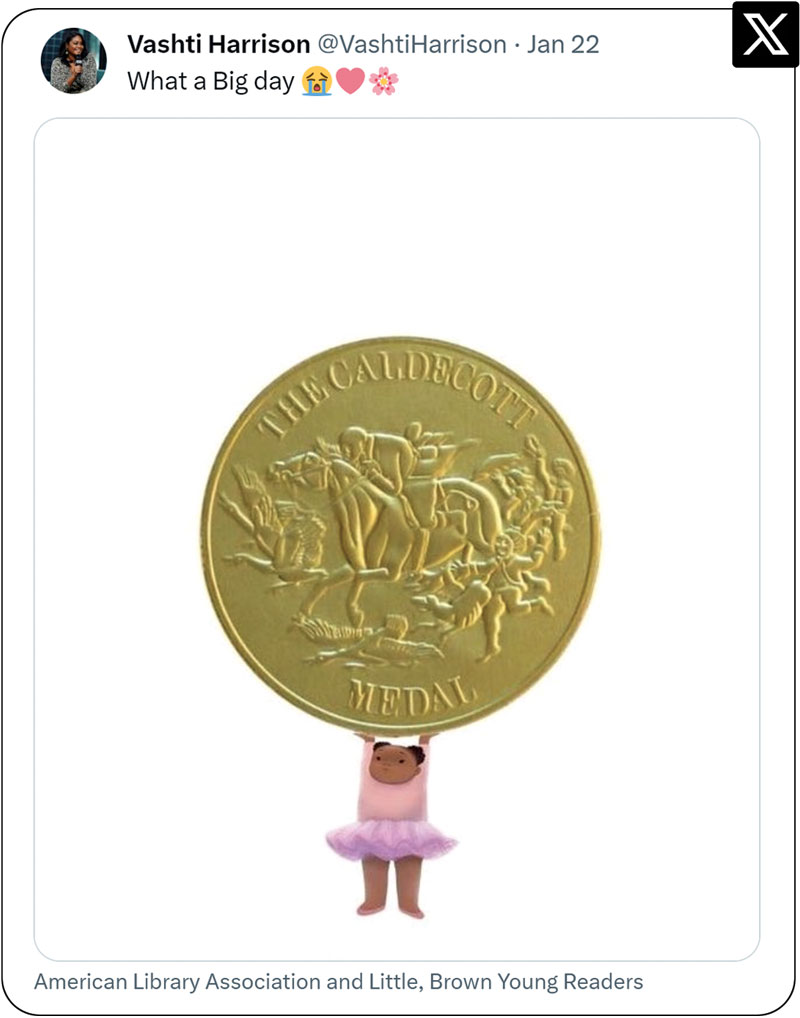Sharing 'Big' at Story Time
The Caldecott winner can be an impactful read-aloud for all ages.

Caldecott Medal winners often find themselves with a permanent spot in story time rotations. Vashti Harrison’s Big will be no exception—and will integrate not just beautiful art, but important discussion as well.
“It’s a great story, and it’s such a beautiful book,” says Leina Bocar, children’s librarian trainee at Brooklyn Public Library’s Marcy branch.
Bocar was immediately taken in by the cover. She only loved the book more when she opened it.
Bocar believes Big can ideally be used as a read-aloud for kids anywhere from ages 5 to 14, but she decided to take a chance with a much younger group. Soon after Big was named Caldecott winner, Bocar read the book to a group of about 40 during a story time for kids nine months to three years old and their caregivers.
“I usually do a board book to make it accessible [with the] quick attention span,” she says. “I kind of snuck this one in just to see if they could handle it. And they could. They’re still squirming around, but they enjoyed it.”
To keep her young audience engaged, Bocar exaggerated descriptions as she pointed out the images of the girl who grows bigger and bigger on the page. Beyond the imagery, Bocar says kids are never too young to share the message that words can hurt and that it is not right to speak cruelly about someone or comment on their body.
The images throughout the book helped keep the younger children engaged as she shared the story of the character’s “journey of self-acceptance and empowerment.”
Bocar noticed the caregivers, who were primarily women of color, getting more out of the story time than usual.
One of Bocar’s favorite parts of the book comes when an adult tells the young character she can help her change. “Then she’s like, ‘No, I’m OK. I don’t need your help.’”
While many readers have found Big to be a story about body positivity, Harrison pushes back on that idea. Most important to her was not that the little girl accepts her body, but that she doesn’t need anyone else’s help to be happy with herself.
Harrison says she wrote Big as a story about the societal problem of anti-fat bias and the adultification of young Black girls, as well as how the impact of the same word can change over time and how words can harm children and stick with them. She hopes adults think about the words they use after hearing the story.
To learn more from Harrison about the book, its themes, and the discussions she hopes it will create, visit bit.ly/3w4Ber9.
RELATED
The job outlook in 2030: Librarians will be in demand
The job outlook in 2030: Librarians will be in demand
ALREADY A SUBSCRIBER? LOG IN
We are currently offering this content for free. Sign up now to activate your personal profile, where you can save articles for future viewing





Add Comment :-
Be the first reader to comment.
Comment Policy:
Comment should not be empty !!!